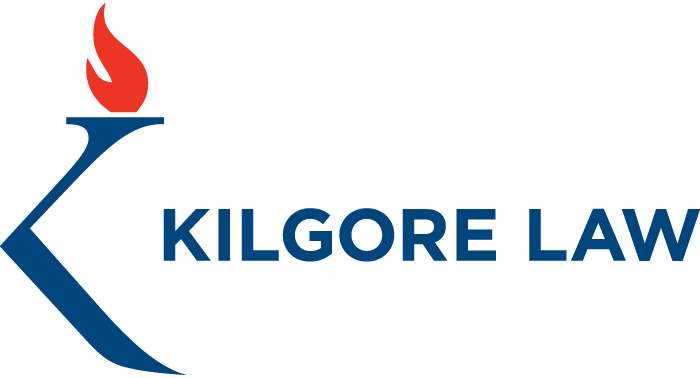In May 2023, the Equal Employment Opportunity Commission (EEOC) issued technical advice outlining employer liability for third-party algorithms that are widely used in evaluating and hiring job applicants. Employers may be held liable under Title VII of the Civil Rights Act for employment discrimination that results from the use of algorithmic decision-making tools. An employer can find itself on the wrong end of a lawsuit or an enforcement action – even if a third-party vendor developed the AI recruitment tool and even if the employer was unaware of the legal risks of automated employment decisions.
Hiring process automation has become big business. Think, for a moment, about all the employers that sign software vendor contracts to use candidate screening algorithms to obtain employment applications from better qualitied candidates to get a superior “first cut.” By mid-2024, enforcement seemed to have begun in earnest, with an EEOC settlement in two separate matters involving the ITutor Group (which paid $365,000 to settle an EEOC discriminatory hiring suit) and Mobley v. Workday, Inc. (in which the court accepted the plaintiff’s claim that an AI vendor could be directly subject to liability for employment discrimination). Amazon is reported to have already dropped an AI recruitment tool that was biased against women.
Although no Texas employers seem to have been named in similar actions to date, the EEOC has cautioned employers that it is watching for AI bias in employment. It would be reasonable to assume that this guidance also applies to other employment decisions, such as promotions, training opportunities, scheduling and reductions-in-force. Federal contractors are subject to very specific DOL guidance about this issue.
AI-Driven Employment Discrimination Lawsuits
Our employment lawyers at Kilgore & Kilgore have been watching this issue. At first, the use of artificial intelligence was controversial in certain specific industries, like the practice of law. But technology moves fast, and AI is now a major factor in all aspects of every business. For information about our employment law practice, click this Employment Lawyers. Or call Kilgore & Kilgore (214) 969-9099. You can also reach out to us online at Contact Kilgore Law to get the conversation started.
AI-Driven Hiring Discrimination and the EEOC
The iTutorGroup settlement focused particularly on age-based discrimination, prohibited by the Age Discrimination in Employment Act (ADEA). The Mobley decision casts a wider net to deal with discrimination based on race, disability, and age. The first line of the Mobley court’s opinion notes that Congress has charged the EEOC with administering and enforcing federal statutes that prohibit employment discrimination, including Title VII, the Americans with Disabilities Act (ADA) and the ADEA.
In other words, the EEOC is looking at all forms of employment discrimination, including those that affect veterans, pregnant workers, members of the LGBTQ community, and those whose genetic data might disadvantage them. These are the same situations covered by the Texas Commission on Human Rights Act (TCHRA), as enforced by the Texas Workforce Commission.
The EEOC’s 2023 technical advice focuses particularly on the question of whether the selection procedures an employer uses to make employment decisions – such as hiring, promotion, and firing—have a disproportionately large negative effect on a basis that is prohibited by Title VII. This is often referred to as disparate impact or adverse impact and deals with the situation in which a rule, although neutral on its face, might have a disproportionate effect on members of a protected group. The classic example is the effect a requirement that firefighters be at least six feet tall might have on women.
The 80 Percent Rule and AI-Driven Hiring Discrimination
Question 3 of the 2023 technical advice makes it clear that an employer may be liable under Title VII for its use of algorithmic decision-making tools whether these tools were developed and administered in-house or by another entity, such as a software vendor. Ignorance of the vendor’s process is no longer an excuse.As a practical matter, the EEOC now advises employers to determine whether AI tools produce selection rates for protected groups that are less than the selection rates for another group.
Selection rates are determined by dividing the number of applicants by the number of hires for a particular group. These rates are then compared by dividing the lower selection rate by the higher selection rate. If the resulting percentage is less than 80 percent, there is an inference that the difference is substantial. The 80 percent rule is not a guarantee of compliance, but a general guideline that may be useful in demonstrating good faith.
How to Avoid Bias in Hiring Processes and AI-Driven Hiring Discrimination
- Obtain the EEOC Guidelines for AI-based Recruitment Tools
- Work with an experienced employment lawyer to draft indemnification provisions to be included in software vendor contracts.
- Implement regularly scheduled audits and evaluations of AI recruitment tools and track demographic data of applicants and hires.
- Create an 80 percent test and employ it as a diagnostic tool for measuring new hires, promotions, terminations, reductions-in-force, etc.
- Consider other legal options if your business is targeted in an employment discrimination action. These might include breach of contract claims, deceptive business practice lawsuits, or other formal legal actions against AI recruitment tools vendors that could shield you from exclusive legal responsibility.
- Insert human decision-making at critical points along your hiring processes to prevent AI bias or the appearance of bias. Consider doing this for other employment-related decisions such as promotions, layoffs, and scheduling changes. Automated screenings of applicants are convenient, but they should not be the last word.
- Train your HR staff and managers in the proper use of AI when it comes to making hiring and other employment-related decisions.
Count on Kilgore & Kilgore Employment Lawyers to Help You With AI-Driven Employment Discrimination
Experience counts and laws evolve. The new EEOC guidance imposes significant new obligations on employers. Reach out to our experienced employment attorneys. Click Kilgore Law to contact us.
